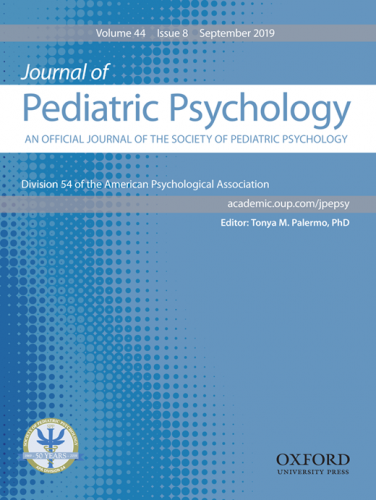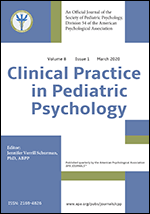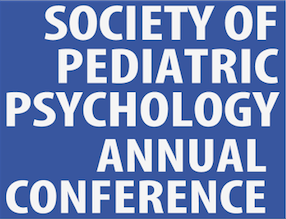Fact Sheet: Childhood Asthma
Asthma is a chronic inflammatory disease characterized by airway obstruction, inflammation, and hyper-responsiveness, yielding variable and recurring symptoms such as wheezing, shortness of breath, coughing, and chest tightness. Genetics, early childhood exposures (e.g., infections), and environmental variables (e.g., airborne allergens, pollution, mold in homes, substandard housing) are believed to be etiological factors in childhood asthma. Adherence rates to medication varies greatly. One study reports adherence rates as low as 33.8% and rates as high as 85.5%, depending on whether the child had uncontrolled or controlled asthma, respectively. Low adherence rates are problematic because they are associated with more severe symptoms. Non-adherence can be intentional (e.g. voluntarily forgoing medications) or unintentional (e.g. forgetting). Many factors contribute to low adherence rates in children and adolescents including child behaviors, beliefs about the usefulness of medication, and cost.
Prevalence and Course
Over 8% of children in the United States have asthma, making it the most common chronic childhood disease. Although prevalence is higher in males under the age of 5, prevalence does not significantly differ in school-aged children and adolescents until adulthood, at which point prevalence is higher in females. The course and treatment of asthma varies with disease severity (intermittent versus persistent) and level of control of current asthma symptoms. Persistent asthma can be further categorized as mild, moderate, or severe. Generally, youth with persistent asthma are more likely to experience asthma attacks, and benefit from long-term, daily maintenance medications (e.g., inhaled corticosteroids). Those with asthma may also prevent exacerbations by avoiding environmental triggers. Although there is no cure, remission of asthma symptoms is possible and is more likely among people with less severe asthma, better forced expiratory volume, and fewer allergies or atopic conditions.
Health and Psychosocial Consequences
When asthma is not well-managed, it is associated with negative health consequences (e.g., decreased lung functioning, frequent hospitalizations), as well as problems in daily functioning (e.g., school absences and lack of participation in extracurricular activities). Children with severe asthma seem at higher risk for internalizing and externalizing concerns than children without asthma. Some of these mental health difficulties include anxiety, depression, and attention difficulties. Caregivers of children with asthma have also been shown to experience psychosocial difficulties. For example, they may display higher levels of anxiety and depression than caregivers of children without asthma, which in turn may interfere with how well the caregiver can control the child’s asthma symptoms.
Evidence-based Assessment
Many factors, including parental health literacy and behavioral adjustment in young children, are important to assess due to their potential influence on asthma control and medication use. While several health literacy assessments exist (e.g. Test for Functional Health Literacy in Adults, Rapid Estimates of Adult Literacy, Asthma Numeracy Questionnaire), these measures do not adequately measure all components of health literacy or all components of asthma-specific health literacy. Barriers to adherence are also important to evaluate, including financial limitations, familial problems, access to healthcare, and poor communication with healthcare providers. When working with adolescents, perceptions of treatment and social support should be considered. Adolescents with inconsistent asthma symptoms often fail to recognize the necessity of taking their medications, while, others dislike medication side-effects, which can impair adherence. Additionally, assessing compliance to Asthma Action Plans (plans of treatment) provides another indicator of asthma management. Of note, self-reported adherence ratings are subject to bias; objective measures (e.g., pharmacy refill data, electronic monitoring) have better evidence for monitoring medication adherence without social desirability effects.
Culture, Diversity, Demographic and Developmental Factors
Adherence to asthma medications is lower among adolescents and individuals from underrepresented groups and marginalized identities, especially those with low health literacy. Emergency room visits also tend to be higher for youth who identify as African American. Children of Puerto Rican descent and children with obesity may also be at risk for more frequent emergency room visits or more severe asthma outcomes, respectively. The highest childhood prevalence rates are found among children from socioeconomically disadvantaged backgrounds and children who identify as non-Hispanic black race and ethnicity. However, the prevalence of asthma in non-Hispanic black youth has stopped increasing.
Evidence-based Interventions
Interventions often target patient and family education, adherence, asthma management, and healthcare providers. Research indicates that children’s breathing and school attendance improve when they go through an educational intervention. Interventions with behavioral and educational components may increase adherence rates to inhaled corticosteroids. Notably, a review focusing on children with severe asthma indicates educational interventions are most effective when paired with psychosocial or other interventions. Some commonalities found in several effective interventions include individualization to the child and involvement of the family or school. Because stress plays a role in asthma exacerbations, psychoeducation programs that teach children ways to reduce stress may improve lung functioning and psychological well-being. Technology (e.g., websites, text messages, and applications) provides another means to educate and reach youth and families. For instance, a computer-based asthma education program for children with asthma and their families has been found to increase parental disease knowledge. Additionally, digital technologies may improve disease management and adherence in youth with asthma. Furthermore, there is a growing focus on developing mobile health (mHealth) tools to assist youth in improving their asthma management and medication adherence.
Resources
- Centers for Disease Control and Prevention (2018). Asthma in children
- Centers for Disease Control and Prevention (2019a). Data, statistics, and surveillance
- Centers for Disease Control and Prevention (2019b). Kids
Authors: Jennifer Kelleher, B.S., & Christina Duncan, Ph.D.
Date of last update: January, 2020
References
- Adams, C.D., Dreyer, M., Dinakar, C., & Portnoy, J. (2004). Pediatric asthma: A look at adherence from the patient and family perspective. Current Allergy and Asthma Reports, 4(6), 425-432.
- Ahmad, A., & Sorensen, K. (2016). Enabling and hindering factors influencing adherence to asthma treatment among adolescents: A systematic review. Journal of Asthma, 53(8), 862-878.
- Akinbami, L. J., Morman, J. E., Garbe, P. L., & Sondik, E. J. (2009). Status of childhood asthma in the United States, 1980-2007. Pediatrics, 123(3) (Suppl.), 131-145.
- Akinbami, L. J., Simon, A. E., & Rossen, L. M. (2016). Changing trends in asthma prevalence among children. Pediatrics, 137(1), 1-7.
- Booster, G. D., Oland, A. A., & Bender, B. G. (2016). Psychosocial factors in severe pediatric asthma. Immunology and Allergy Clinics of North America, 36(3), 449-460.
- Booster, G., D. Oland, A. A., Bender, B. G. (2019). Treatment adherence in young children with asthma. Immunology and Allergy Clinics of North America, 39(2), 233-242.
- Buelo, A., McLean, S., Julious, S., Flores-Kim, J., Bush, A., Henderson, J., … ARC Group (2018). At-risk children with asthma: A systematic review. Thorax, 73(9), 813-824.
- Canino, G., Garro, A., Alvarez, M. M., Colón-Semiday, A., Esteban, C., Fritz, G., … McQuaid, E. L. (2012). Factors associated with disparities in emergency department use among Latino children with asthma. Annals of Allergy, Asthma, and Immunology, 108(4), 266-270.
- Carillo, G., Han, D., Lucio, R. L., Seol, Y., Chong-Menard, B., & Smith, K. (2015). Impacting environmental and public health through the use of dual targeted and tailored asthma educational interventions. Journal of Environmental and Public Health, 2015, 1-7.
- Chan, D. S., Callahan, C. W., Hatch-Pigott, V. B., Lawless, A., Proffitt, H. L., Manning, N. E., …Malone, F. J. (2007). Internet-based home monitoring and education of children with asthma is comparable to ideal office-based care: Results of a 1-year asthma in-home monitoring trial. Pediatrics, 119(3), 569-578.
- Cushing, C. C., Fedele, D. A., Patton, S. R., McQuaid, E. L., Smyth, J. M., Prabhakaran, S., … Nezu, A. M. (2019). Responsive asthma care for teens (ReACT): Development protocol for an adaptive mobile health intervention for adolescents with asthma. BMJ Open, 9(8), 1-10.
- Engelkes, M., Janssens, H. M., Jongste, J. C., Sturkenboom, M. C. J. M., & Verhamme, K. M. C. (2015). Medication adherence and the risk of severe asthma exacerbations: A systematic review. European Respiratory Journal, 45, 396-407.
- Fedele, D. A., McConville, A., Thomas, G. J., McQuaid, E. L., Janicke, D. M., Turner, E. M., … Abu-Hasan, M. (2018). Applying interactive mobile health to asthma care in teens (AIM2ACT): Development and design of a randomized controlled trial. Contemporary Clinical Trials, 64, 230-237.
- Giese, J. K. (2019). Evidence-based pediatric asthma interventions and outcome measures in a healthy homes program: An integrative review. Journal of Asthma, 56(6), 662-673.
- Isik, E., & Isik, I. (2017). Students with asthma and its impact. NASN School Nurse, 32(4), 212-216.
- Kamps, J. L., Rapoff, M. A., Roberts, M. C., Varela, R. E., Barnard, M., & Olson, N. (2008). Improving adherence to inhaled corticosteroids in children with asthma: A pilot of a randomized clinical trial. Children’s Health Care, 37(4), 266-277.
- Lasmar, L., Camargos, P., Champs, N. S., Fonseca, M. T., Fontes, M. J., Ibiapina, C., … Moura, J. A. R. (2009). Adherence rate to inhaled corticosteroids and their impact on asthma control. Allergy, 64, 784-789.
- Lindsay, J. T. & Heaney, L. G. (2013). Nonadherence in difficult asthma: Facts, myths, and a time to act. Patient Preference and Adherence, 7, 329-336.
- Long, K. A., Ewing, L. J., Cohen, S., Skoner, D., Gentile, D., Koehrsen, J., … Marsland, A. L. (2011). Preliminary evidence for the feasibility of a stress management intervention for 7- to 12-year-olds with asthma. Journal of asthma, 48(2), 162-170.
- McQuaid, E. L., & Fedele, D. A. (2017). Pediatric asthma. In M. C. Roberts & R. G. Steele (Eds.), Handbook of Pediatric Psychology (5th ed., pp. 227-240). New York, NY: The Guilford Press.
- National Center for Health Statistics, Centers for Disease Control and Prevention. (2019). Table 4.1: Current asthma prevalence percents by age, United States: National health interview survey, 2017. National Health Interview Survey. Retrieved from https://www.cdc.gov/asthma/nhis/2017/table4-1.htm
- National Institutes of Health: NHLBI (2007). National Asthma Education and Prevention Program Expert Panel Report 3: Guidelines for the Diagnosis and Management of Asthma (NIH Publication No. 08-4051).
- Ramsey, R. R., Plevinsky, J. M., Kollin, S. R., Gibler, R. C., Guilbert, T. W., & Hommel, K. A. (in press). Systematic review of digital interventions for pediatric asthma management. Journal of Allergy and Clinical Immunology Practice, doi: 10.1016/j.jaip.2019.12.013
- Rangachari, P., May, K. R., Stepleman, L. M., Tingen, M. S., Looney, S., Liang, Y., … Rethemeyer, R. K. (2019). Measurement of key constructs in a holistic framework for assessing self-management effectiveness of pediatric asthma. International Journal of Environmental Research and Public Health, 16(17), 1-25.
- Sears, M. R. (2015). Predicting asthma outcomes. Clinical Reviews in Allergy and Immunology, 136(4), 829-836.
- Seid, M., D’Amico, E. J., Varni, J. J., Munafo, J. K., Britto, M. T., Kercsmar, C. M., … Darbie, L. (2012). The in vivo adherence intervention for at risk adolescents with asthma: Report of a randomized pilot trial. Journal of Pediatric Psychology, 37(4), 390-403.
- Spaulding, S. A., Devine, K. A., Duncan, C. L., Wilson, N. W., & Hogan, M. B. (2012). Electronic monitoring and feedback to improve adherence in pediatric asthma. Journal of Pediatric Psychology, 37, 64-74.
- Tzeng, Y. F., Chiang, B. L., Chen, Y. H., & Gau, B. S. (2018). Health literacy in children with asthma: A systematic review. Pediatrics and Neonatology, 59(5), 429-438.



